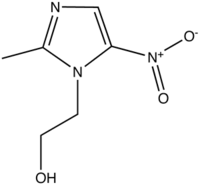X Glaucoma Alert: Many drugs can worsen-or even triggerglaucoma. Some antidepressants, blood pressure medicines, antihistamines, over-the-counter cold remedies containing pseudaephedrine, and steroids may increase glaucoma risk. Read product information carefully. Regular eye exams are essential if you are over 40, African-American, diabetic, or have a family history of glaucoma.
X BP medicines: Those taking a new drug (or a different dose) to lower blood pressure may experience dizziness. Be cautious--particularly during the first week and when standing up after reclining in a bed, couch, or chair.
X Tetracycline: Common side effects of this antibiotic include increased sensitivity to the sun, abdominal pain, loose stools, nausea, and vomiting. The prescription drug can permanently discolor teeth in children under 8 years old. It is also not recommended for women who are pregnant or breast-feeding. For optimal absorption, avoid taking TUMS, Maalox, Mylanta, or Pepto-Bismol within two hours of this drug.
X Inhalers: Doctors often instruct patients to take two puffs at a time. For the best results, take one puff and then wait one minute before taking the other. This allows the first puff of medicine to begin opening airways, allowing the second puff to travel deeper into the lungs. In some cases, a spacer attachment (commonly used to enhance drug delivery in children) can work wonders in adults.
X Tylenol: To avoid serious side effects, adults should take less than four grams of Tylenol (acetaminophen) per day. Be aware that Tylenol is an ingredient in many prescription pain medicines, including Vicodin, Lortab, Norco, Darvocet, Ultracet, and Fioricet. And those who are also taking over-the-counter preparations such as Tylenol arthritis or cold medications can easily take too much of the drug.
X Flagyl (metronidazole): Drink absolutely no alcohol when taking this antibiotic-consuming even small amounts causes severe facial flushing, nausea and vomiting.
X Warfarin (Coumadin): Be sure to inform all healthcare providers that you are on blood-thinning medicine. Other drugs you are taking may affect the Warfarin dosage you need.
Editor's Note: Pharmacists are equipped to do more than dispense drugs accurately. These well-trained professionals are an integral, and sometimes untapped, part of the healthcare maintenance team.
In this issue, pharmacist Cara Acklin offers tips on taking drugs ranging from painkillers to inhalers. If you have a question about medications, please write to From the Pharmacy, 1100 Waterway Bird, Indianapolis IN 46202.
COPYRIGHT 2005 Saturday Evening Post Society
COPYRIGHT 2005 Gale Group



